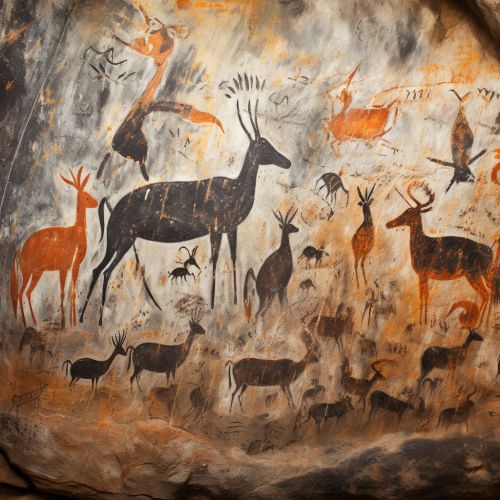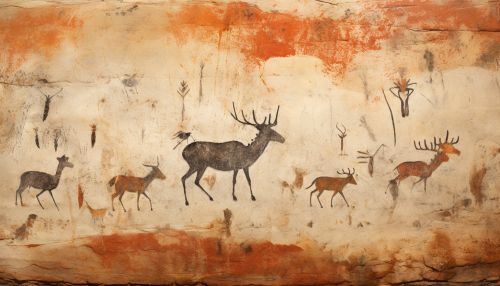Cave painting
Prehistoric Art
Cave paintings, also known as "parietal art", are a type of prehistoric art featuring images on the walls of caves. They are among the most intriguing and valuable records of our ancient ancestors, providing a unique glimpse into the past.


Origins and Distribution
The origins of cave painting are believed to date back to the Upper Paleolithic period, around 40,000 years ago. The earliest known cave paintings are found in the El Castillo cave in Spain, where a red disk has been dated to more than 40,800 years old.
Cave paintings are found throughout the world, with notable concentrations in regions such as Europe, Africa, Australia, and the Americas. In Europe, the most famous examples are found in the caves of Lascaux in France and Altamira in Spain.
Techniques and Materials
Cave painters used a variety of techniques to create their art. These include painting, drawing, engraving, and even sculpting. The most common materials used were mineral pigments like ochre, charcoal, and manganese, often mixed with animal fat or plant juice to create paint.
Themes and Interpretations
The themes depicted in cave paintings are diverse, but animals are the most common subject, often depicted in great detail and with a high degree of realism. Other common themes include human figures, handprints, geometric shapes, and abstract patterns.
Interpretations of cave paintings vary widely, with theories ranging from hunting magic to religious ritual to early forms of written communication. However, the true meanings of these ancient artworks remain a mystery, as the cultures that created them left no written records.
Preservation and Conservation
Preserving and conserving cave paintings is a complex and challenging task. Many factors can damage cave art, including natural processes like water erosion and biological growth, as well as human activities like tourism and vandalism.
Efforts to preserve cave paintings often involve a combination of physical protection measures, such as restricting access to the caves, and scientific methods, such as climate control and chemical treatments.
Impact on Modern Art
Cave paintings have had a significant impact on modern art, inspiring artists with their simplicity, power, and timeless beauty. They have also influenced the development of art theory and criticism, challenging traditional notions of what constitutes art and who can be considered an artist.
